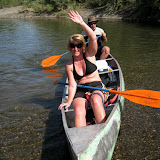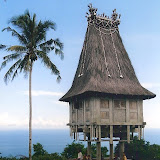 Mountain View, CA - It's officially Summer!! How do I know? Well, our annual canoe trip has already happened. Last weekend Suwei and I headed up to Healdsburg, CA for the umpteenth time (people ask how many years I've been running this trip, and I have to answer honestly that I have no idea, and I can't be bothered to count). It's always a good trip. Drinking and floating seem to provide the perfect excuse for gathering friends together.
Mountain View, CA - It's officially Summer!! How do I know? Well, our annual canoe trip has already happened. Last weekend Suwei and I headed up to Healdsburg, CA for the umpteenth time (people ask how many years I've been running this trip, and I have to answer honestly that I have no idea, and I can't be bothered to count). It's always a good trip. Drinking and floating seem to provide the perfect excuse for gathering friends together.This year Suwei and I drove out a week early so that we could spend some time before and after the canoe trip visiting friends and family that couldn't make it out to the river. Needless to say, we've kept plenty busy the last two weeks.
Anyway, I'm posting what pictures I have for the canoe trip. Thanks go out to Eng-Shien for taking most of these, as I never manage to bring a camera down the river and at camp I'm usually running around chatting too much to snap any photos. If anyone else has some good pics, I would love to add them to the slide show.
Here are a few stats from the weekend:
49 People canoed on Saturday. Actually 48 and one kayaker.
3 Kegs of beer drank.
0 Injuries, although as usual Beener did her damnedest to change that number.
2 People pissed off enough about the noise we made Friday night to lodge a complaint.
2 People who responded to the complaint with a demonstration of interpretive yoga fighting.
5 People sucked into our group from the neighboring campsite, including 1 versed in interpretive yoga fighting.
54 People joining us for the BBQ.
0 The amount of toast Teri managed to get over the course of the weekend.
4 Friends I knew from Peace Corps Malawi.
1 Pink camp chair.
7 People daft enough to go kayaking with us on Sunday.
I hope everyone had a great time. Thanks for coming and enjoy the photos.
If you think you'd like to join us out on the river next year, just go to the yahoo group and sign up: http://groups.yahoo.com/group/RussianRiverCanoeTrip/ That way you'll get an invite when I send out next year's information.
For more pictures of the canoe trip and our time in San Francisco just click on the slide show below.
 |
| Russian River Canoe Trip, Healdsburg, CA |

















































